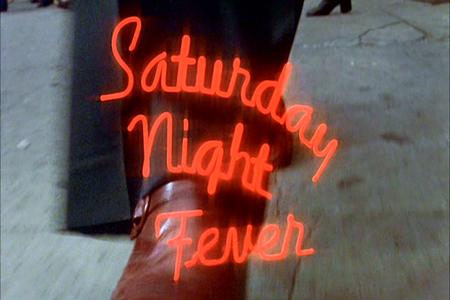
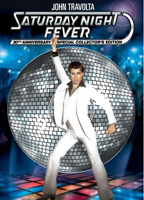 BUY IT AT AMAZON: CLICK HERE!
BUY IT AT AMAZON: CLICK HERE!
STUDIO: Paramount Home Video
MSRP: $19.99
RATED: R
RUNNING TIME: 118 min
SPECIAL FEATURES:
- Commentary by Director John Badham
- Catching the Fever
- A 30 Year Legacy
- Making Soundtrack History
- Platforms and Polyester
- Deejays and Discos
- Spotlight on Travolta
- Back to Bay Ridge
- Dance Like Travolta with John Cassese
- Fever Challebge!
- ‘70s Discopedia
The Pitch
Whether you’re a brother or whether you’re a mother, you’re stayin’ alive, stayin’ alive.
The Humans
John Travolta, Karen Lynn Gorney, Denny Dillon and the music of The Bee Gees
The Nutshell
Tony is a kid from the wrong side of the tracks who has one talent. He can dance, and when he does he is a God among men. When he meets an upper class girl who is also a talented dancer, he believes that together they win the upcoming dance contest. Throughout the practices leading up to the contest, Tony moves throughout his everyday life with his fractured family, his racist street friends, and his go-nowhere job until he realizes that if he doesn’t do something soon he will end up going nowhere fast.
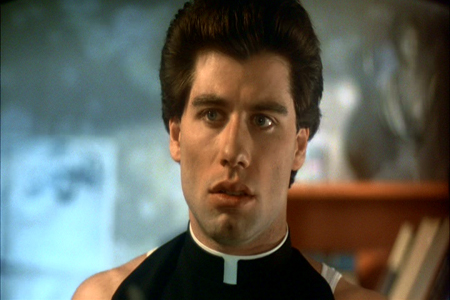
After donating another million, the Church of Scientology finally let John begin to practice exorcisms.
The Lowdown
If Saturday Night Fever is anything, it is a slice of life from the 1970s. Early on, we get the disco clothing style, the hair, the flamboyant clothes and the gold chains. We see posters of Bruce Lee, Farah Fawcett and Al Pacino. We get the cars and the music. Where John Travolta showed us the greasers in Grease, he showed us the party and disco scene in Saturday Night Fever. Before Pulp Fiction paid mouth service to the pop culture in the 1990s, Saturday Night Fever did the same for the 1970s.
Travolta plays Tony Manero, a young man who lives with his down-and-out family and works at a paint store. His life is drab except for his weekly trip to the dance club where he is the king of the dance floor. While he is ridiculed and talked down to during his everyday life, he is almost worshiped on that dance floor. While he is avoided by girls on the street, he is sought out by girls in the club. It is the only place where he feels like he is somebody.
Tony has little in the way of hopes and dreams, but one of his aspirations is a big dance competition coming up. Tony lacks many things in his life, but a dedication to work is not one of them. When Tony meets a dancer named Stephanie, he decides that they would be great partners for the competition. Stephanie is the polar opposite of Tony. While Tony is satisfied to just flow with his life, Stephanie wants to get out of the neighborhood and move to Manhattan to make something out of herself. While Tony is street smart, Stephanie is intrigued by learning as much as she can about the world around her. She is full of a self taught class and Tony is basically classless. Stephanie is everything that Tony is not.
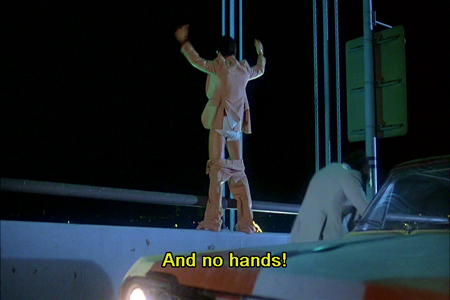
While the movie is best known for the dancing, there is a lot more to it than just the dance moves. Tony is a kid who needs to find himself. He is surrounded by a true lack of hope for his future, and when he sees the hopes and dreams of Stephanie, his problems are magnified. The movie showcases the troubles of an uneducated youth trying to fight to make something of himself. While Tony is a God on the dance floor, he knows that dancing is not something that will last. He is running in place and has nowhere to go but straight ahead, everyday, into a life he hates.
He takes a look at the people around him. His family is splintered and torn. His father is unemployed after years of working and his mother is in denial of all that is going wrong around her. When his brother, a priest and the good seed in the family, returns home to reveal that he is leaving the church it fractures the family even more. There is nothing for Tony at home and he sees the results of a lack of a good future first hand. Through his brother, he sees what can happen if you just blindly follow in the footsteps of those around you instead of following your dreams.
He is treated best by his boss at the paint store. He receives a raise and is just happy that someone, anyone, would appreciate something he does. His father ridicules the small amount of the raise and Tony argues that it is the only time in his life that anyone ever said he was good enough. However, when he looks around at the lifers in the paint store, he sees more hopelessness. He sees yet another place where there is nowhere he can go, no upward movement.
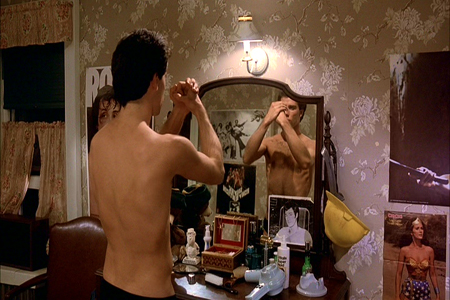
After another million, John had achieved a higher level of Thetan and began to morph into Xenu.
His friends, who are both racist and hopeless, pay him lip service and it is not really shown if they are just being good friends or are actually honest in their worship of him. The one friend who really does look at Tony as a true friend does not receive the honesty from Tony that Tony himself seeks from those around him. It is only when tragedy strikes that Tony sees that this is not a life he wants for himself.
The movie is not about the dancing. The music and dance are extremely well done, but the movie is more than that. This is not a Dirty Dancing where the entire object is to showcase the leads’ dance skills. This is not Flashdance, where the story is about trying to achieve your dreams as a dancer. While Tony and Stephanie do win the dance contest, it is meaningless because everyone in this movie just seems to be vacantly paying lip service. It is only after winning that Tony realizes he needs something more in his life. The dance contest is just another thing that is given to Tony and proves that if he continues on in his current lifestyle, he will get nowhere.
The movie is brutally honest and holds no punches. Tony is not a good person, although he wants to be, and Travolta plays him to perfection. He can dance and he can act, and in this movie he makes Tony Manero into such a well rounded person that you really care about him and want him to succeed. The character of Stephanie also works so well in showing what Tony is not, and what he could aspire to be. The movie starts with a swagger and ends with a depressed hope and is brilliant in showcasing Tony’s fall from grace. What makes it strong is that it is a fall from a false grace to a man who was already at rock bottom to begin with. This makes the fall positive in that while he has fallen from his idol status, he has nowhere to go but up from here.
This is what every other dance movie wishes they could be and as a parable, it is perfection.
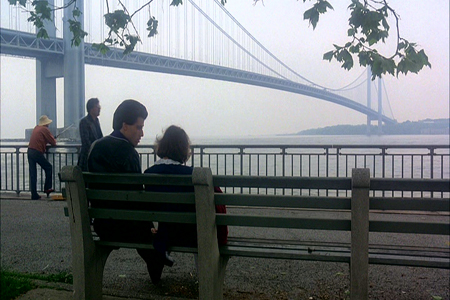
Homage or blatant ripoff? Manhattan in 1979.
The Package
The packaging for the DVD is pretty slick with a transparent cover with a dancing John Travolta on it and the DVD designed like a disco ball. It’s pretty nice looking, but a little flimsy.
There are a lot of extras. Catching the Fever is a 5-part documentary over the movie. It is extremely comprehensive and covers just about everything, talking to everyone involved except John Travolta. That is a problem, and there is even a part of John Travolta himself, but he gave nothing to this documentary. I would have liked to hear what Travolta had to say about the movie that was the highest point of his career, but everyone else had a lot to things to add that makes it a great watch. Hell, even the Bee Gees are involved in the documentary and talk about how much this movie actually changed their sound as a band.
Back to Bay Bridge returns the viewer to the original locations of the movie and what they look like today. It is the exact same type of special feature that Raging Bull did on its recent re-release. Here is a bit of strange trivia that I did not know. Lloyd Kaufman (Troma Studios) was the Location Executive for this movie.
Dance Like John Travolta with John Cassese is a featurette with John Cassese, who has taught many movie stars to dance. It is a feature where he teaches you how to dance like they did in the movie. Fever Challenge! is a game where you watch the colored lights and then move your feet with them to dance. There is something called 70’s Discopedia that is a trivia pop-up track that shows up on the screen throughout the movie with lots of interesting tidbits of information.
Finally we get a commentary with the director John Badham with lots of interesting information. He talks about a lot of various topics throughout the movie, and it remained interesting despite him having no one to bounce his thoughts off of. Between the documentary and the commentary, this DVD covers everything you would want to know about this movie, with the exception of Travolta’s thoughts.
The most important part of the movie is the music. Saturday Night Fever was the first movie that used the soundtrack to sell the movie before the film was ever released. The sound on the DVD, presented in Dolby Digital, is great. The picture is clean and crisp in 16:9 widescreen and every minute of the movie looks and sounds great.

9.1 out of 10